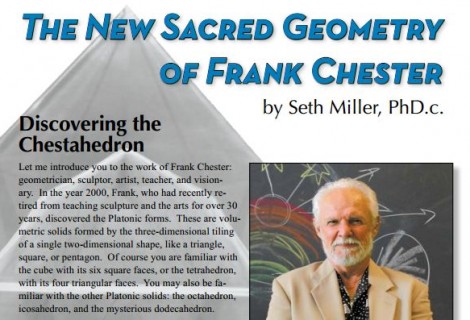An Esoteric Guide to Spencer Brown’s Laws of Form #3
« Previous Page | 1 2 3 4 5 | View All | Next Page »
(New readers will want to start with the first installment.)
We ended the last installment noting that the first distinction must be of distinction, but this must be considered as a complex, recursive creation and simultaneous crossing of a boundary that is just precisely the boundary between that very activity of its creation and the fact of it as created.
To get at this another way, we can point out that the Glanville has actually hit on elements in this direction already, but (it seems) hasn’t quite put it together in the same way. Remember that the whole time we have been talking about the first distinction we are also talking about “the observer”, which we could call a “self”. It may even be worth revisiting some of the above text with that implicit translation in mind. I remind you of this because, Glanville, in his essay The Self and the Other: The Purpose of Distinction, is exploring solutions to the problem of infinite regression that arise when the mark doesn’t distinguish itself from its value, and he uses “self” and “other” to hold the logic of “mark” and “value”, which is perfectly fine.
Glanville notes that we have a set of relations that are implicit in each other: that between self and other: “the fundamental distinction between self and other [read: between the mark and its value] cannot be more fundamental than the distinction of the self, nor can it be less so: another circularity, another reduction of hierarchy” (p. 3).
Except that this isn’t a reduction of hierarchy. It is actually the very foundation of all hierarchy; this is Glanville’s mistake (if it could be called such): the misidentification of circularity with the collapse of hierarchy. The restoration of this feature is precisely what is needed to move forward, and Glanville actually gets there, but doesn’t quite (it seems) recognize the fact.
He points out that the distinction between self and other is not complete, but actually implies more: the self as self, and the self as other. This is to say, the mark as a mark, and the mark as the value it indicates. But this is a reciprocal relationship, where we also note an other as self. He has a useful shorthand formulation which is probably worth mentioning, because it helps make the point more clearly. He takes a capital letter to refer to the recursive nature of self, it is self-defining (but, as we shall see, also other-defining), and a lower case letter to refer to the objectified, the not-self (but only, and always, for self).
“(A, A) indicates the self of A “observing” itself as a self
(A, b) indicates the self of A “observing” b as other, that is, b as another to A’s self :::: etc.” (p. 2)
Remember that “observing” here is the same as the mark (referring back to GSB), the same as the distinction; it is the form. Now we get to the juicy bit. He points out:
“Thus, the distinction between self and other implies the distinction of the self, and the distinction of the self implies the distinction between self and other. And, because the roles of what are called the self and the other are, in effect, to each of them as a self, the same, and because each “validates the other”, it is necessary that that which the so-called self refers to as the other, is, to its self, a self in its own right: ie, it distinguishes itself, and is thus distinguishable to another (the original self): again the circularity. Thus , we acquire an (aesthetic) symmetry.” (p.3)
« Previous Page | 1 2 3 4 5 | View All | Next Page »





